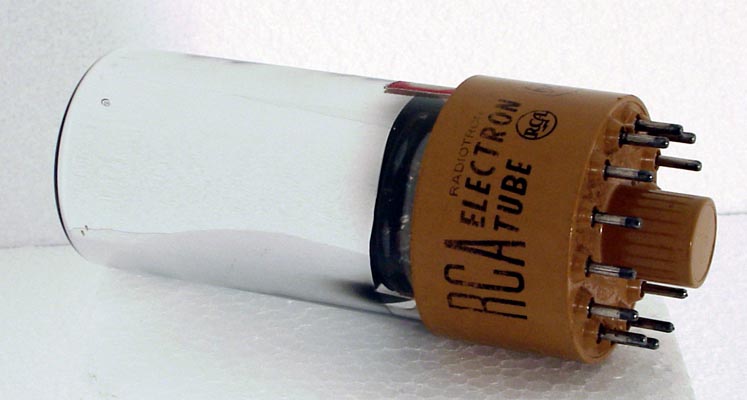
|
The 6217 photomultiplier was designed by RCA for applications where good red sensitivity was required. The amplification possible with the 6217 is of the order of 600,000 times and can operate linearly up to 50 MHz.The 6217 is described as a photomultiplier tube used in a BBC flying spot scanner. A telecine scanner: each frame of a film is scanned by a flying spot from a cathode ray tube in a raster pattern and the transmitted light is then detected and amplified by a photomultiplier tube.The photons striking the light sensitive target (cold cathode) release electrons that are attracted to a positively charged electrode. The electrons striking the electrode release secondary electrons and the process is repeated in a series of electrodes known as dynodes before the greatly amplified current reaches the final anode. Amplifications of up to a million times are possible with some multipliers. Early devices were sensitive in the blue and ultraviolet but not the red end of the spectrum.The wide glass tube envelope is 50 mm in diameter and, excluding the B14A base pins, is 128 mm tall.Reference: Data-sheet. Type 6217 was first introduced in 1952. See also 1952 adverts. |
Absolute Maximum Operating Conditions¶
| Va | mAa | 
| 1250 | 7.5 |
|
Updated July 04, 2020.
|
|